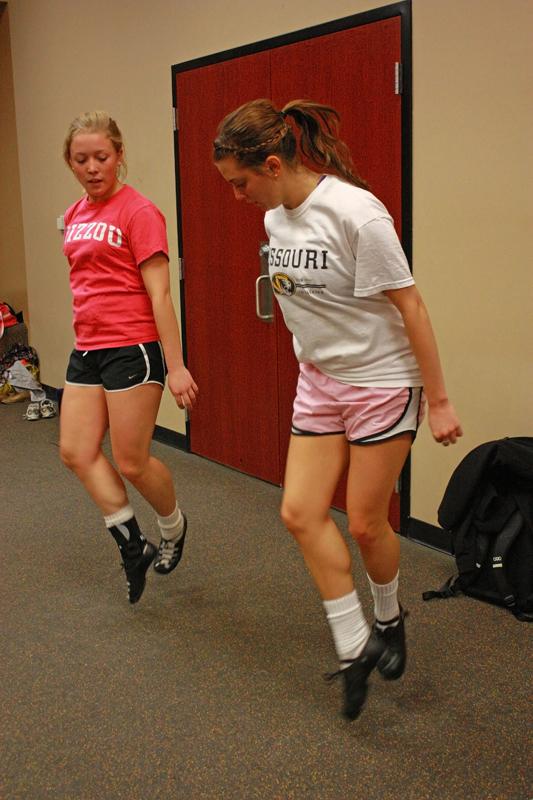Comparing Irish dance to Riverdance is like comparing knitting to crocheting — close but not quite.
The ladies of the Irish dance club describe their art as footwork that uses a mix of hard and soft shoes. Soft shoes are for more graceful dances, while hard pairs help bang out beats.
Although relatively unknown to MU, six girls who share a love for the art found each other on a campus of tens of thousands.
“I used to be Katie’s RA, and I just kind of found out through the hall that Katie was an Irish dancer,” said club member and Maneater staffer Sally French. “As a senior, I haven’t danced in a while. I just thought that it was really cool, but of course there aren’t any Irish dance clubs here in Columbia. There isn’t much of an Irish dance scene.”
It wasn’t until this semester that the girls came together. The six work together collaboratively and are planning a performance for 7 p.m. March 14 in Bengal Lair. The club will accept donations at the show for Saint Baldrick’s Foundation, an organization for kids with cancer.
“The club is separated into three sections,” club member Shannon Kelly said. “We have a dance part, a music section and the culture aspect of it. We haven’t worked much on the culture aspect.”
After their performance on March 14, the girls plan to work on the cultural aspect of the club and encourage non-dancers to join.
“We want to stress that this isn’t just for dancers and musicians,” club member Katie Alexander said. “We want people of all heritages to come see how much fun it can be to do celtic dancing. You don’t need to be Irish. You can still enjoy it.”
Alexander first discovered her interest in Irish dance in elementary school. Beginning her journey at the St. Louis School of Irish Arts, Alexander continued to dance through high school.
“My favorite part is (dancing) casually,” said Alexander. “When I went over to Ireland they would all do it in the pubs. It’s called ceili, which are group dances of 4 or 8. It’s like line dancing. Everyone’s just doing it for fun and it’s not a big production. It isn’t about the make-up or wigs.”
Alexander continued to dance through high school, picking up the tin whistle and flute along the way. Even though Irish dance is typically extremely competitive, Alexander found herself in a different sort of group.
“We weren’t super competitive with dancing,” said Alexander. “Our dance school wasn’t super focused on competition. We were really competitive with music and stayed more traditional with dancing. It was more about performing and doing things as a group.”
French said this is rare for Irish dance. French’s dance school was very competitive, and drama was guaranteed if dancers switched to another school.
Alexander said she stopped competing upon arrival at MU but continued to participate in music contests.
The women said they hope others can rekindle their love for Irish dance and culture at MU. It doesn’t end in college, French said.







